If you’re an aquarium enthusiast, then Cory Catfish are a must-have!
These small, lively and hardy bottom-dwelling scavengers offer tons of personality with peace, are beloved by aquarists around the world.
For someone who’s looking for the first bottom feeding fish, look no further! The Cory catfish is a fantastic option for any aquarium.
While they are easy to care for and super friendly, they’ll need proper care to thrive. Before you dig into everything you need to know about cory catfish care, let’s start with the most common question, “How big do cory catfish get?”.
Read on to find the answer.
How Big Do Cory Catfish Get?
As known as Corydoras catfish, the genus of South American catfish is one of the most diverse tropical fish, includes 170 recognized species and hundreds more that haven’t been given scientific names.
Different species reach various sizes when they are fully grown. However, the average growth size for Cory Catfish generally ranges from about 1 inch to over 4 inches long. Adult male and female Cory Catfish also differ in size. Older females grow larger over 3 inches in length.
Generally, Cory Catfish are slow growers and don’t grow too much bigger. Many aquarists prefer the smallest species of Corydoras, while others like a big one.
The Three Smallest Cory Catfish Species
Pygmy Cory Catfish (C. pygmaeus)
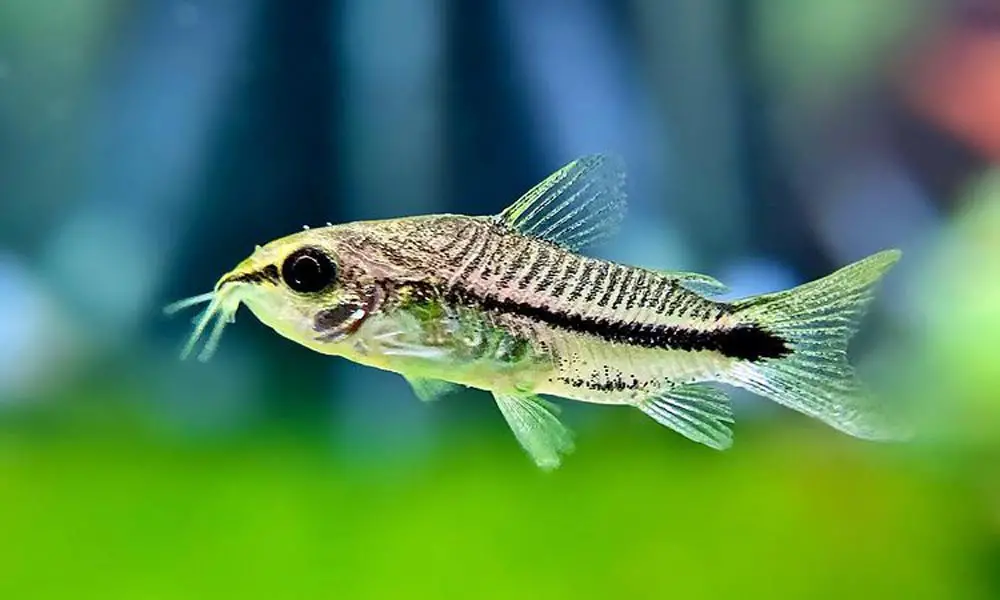
As the name suggests, the Pygmy Cory, or Pygmy Catfish, is one the smallest species out there. These little guys have an average length of an inch. Males typically tend to be a bit smaller than females, hover closer to 0.75 inches.
Pygmy catfish are your perfect fish for a small aquarium since they stay very small and don’t require much tank space. They are peaceful and easy to care for but require a bit more attention if you want them to thrive.
Compared to most corys, they tolerate a more narrow range of water parameters (72- 79°F) and love to swim in the mid-water level of the tank, not just the bottom. They do well with tanks that have smooth substrates; I prefer using soft sand on the bottom. Not mentioned that Pygmy Corydoras are picky eaters.
| Scientific Name: | Pygmy corydoras |
| Origin: | South America |
| Temperature: | 72° – 79° F |
| PH: | 6.4 – 7.4 |
| Minimum Tank Size: | 10 gallons |
Dwarf Corydoras(C. hastatus)
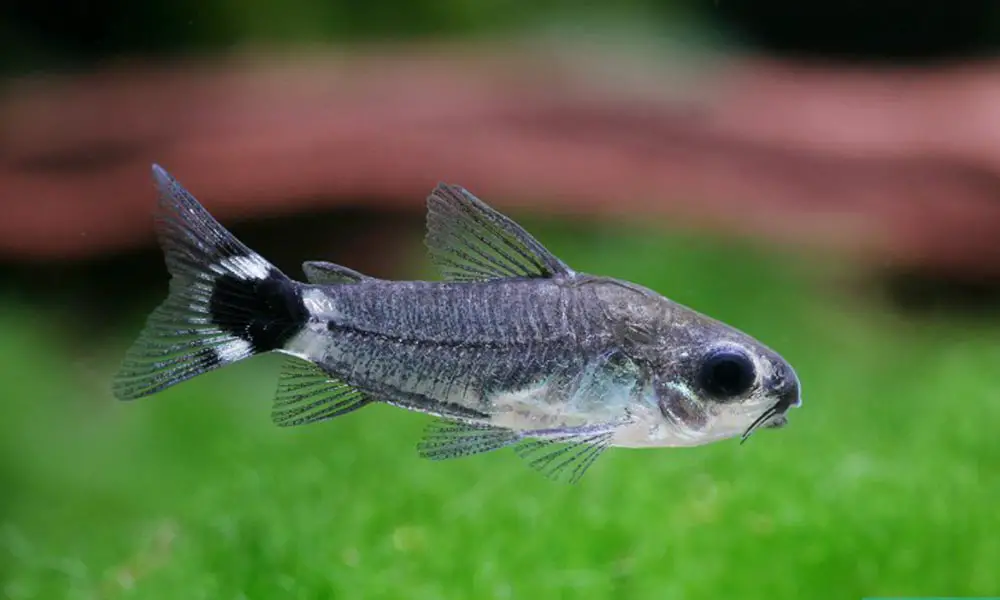
Like Pygmy Catfish, the Dwarf Corydoras, also known as dwarf catfish or micro catfish, are very popular among accomplished fishkeepers. Native to the Amazon River and Paraguay River in South America, it was the first of the three miniature cories to be discovered in the 1880s.
How big do dwarf Corydoras get? They can barely grow up to 1.4 inches in length but typically tend to be roughly an inch long. Females are usually bigger and broader than males too.
Pygmy Catfish and Dwarf Catfish come in super-tiny size varieties, and they do appear very similar. What’s the difference between these two littlest hobos? The main difference is in appearance – Dwarf Corydoras is spotted, while the Pygmy Cory is striped.
| Scientific Name: | Corydoras hastatus |
| Origin: | South America |
| Temperature: | 68° – 82° F |
| PH: | 6.0–8.0 |
| Minimum Tank Size: | 10 gallons |
Salt and Pepper Cory (C. habrosus)
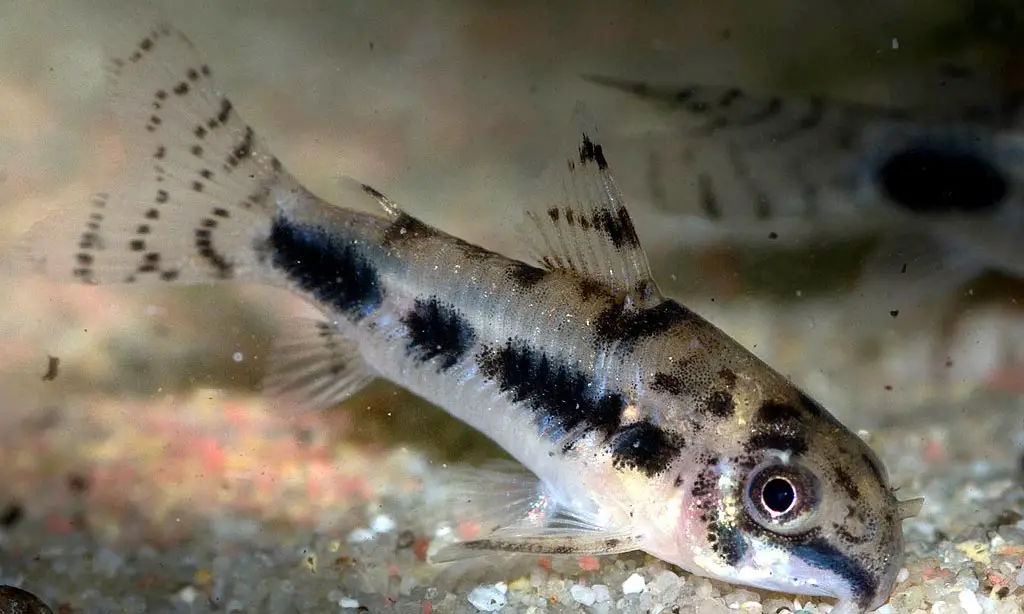
Originates from the Upper Orinoco River in South America, the Salt, and pepper catfish, also called the Checker Cory or the Dainty Cory, is a very lively small schooling fish perfect for the community.
The name tells it all that most Salt and Pepper Catfish will be primarily light tan with black and shiny silver highlights and broken strips. The C. habrosus are the biggest among three species of miniature Corydoras. They can reach 1.4″ in length, but 1.2″ is more typical.
Unlike Dwarf Cory and Pygmy Cory that prefer midwater areas, the Salt and Pepper Cory spends most of its time on the base of the tank in areas of dense plants. They also like being in the company of just one or two instead of 6-10 in a group — less “schooling” than the other two species.
| Scientific Name: | Corydoras habrosus |
| Origin: | South America |
| Temperature: | 72° – 79° F |
| PH: | 6.2 – 7.2 |
| Minimum Tank Size: | 8 Gallons |
The Three Biggest Cory Catfish Species
Banded Cory Catfish (Scleromystax Barbatus)
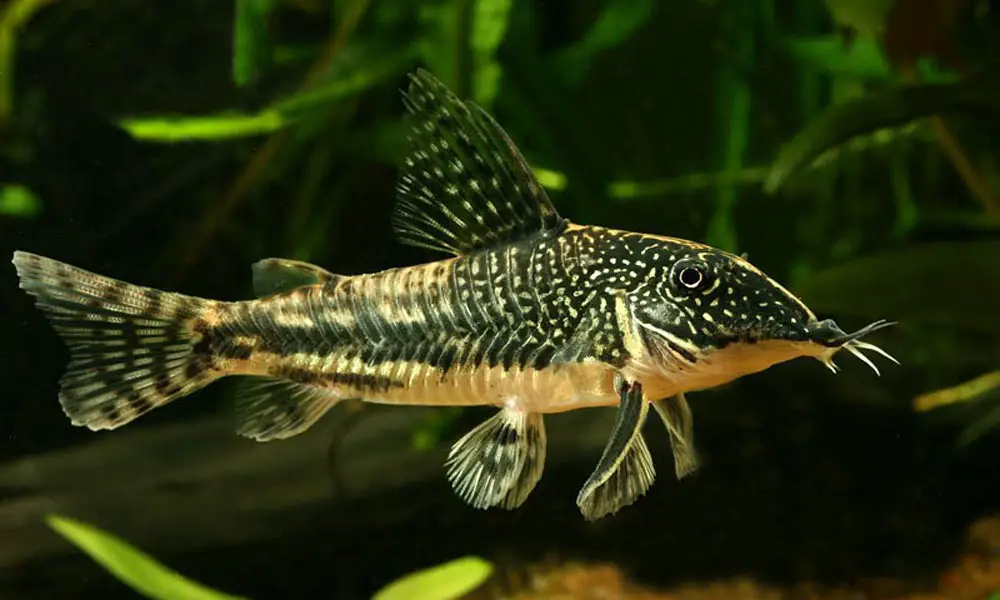
The Banded Cory Catfish, also called Bearded Cory Catfish, look terrific whether they are in a community tank or have their own species-only tank.
Originates from Rio de Janeiro to Santa Catarina in South America, Corydoras barbatus is one of the largest cory catfish species. How big do banded Cory catfish get? They will grow to about 4 inches (10 cm) in length.
Since Bearded Cory Catfish live in cool coastal regions, these little guys are much colder tolerant than other species. Though it’s a very peaceful schooling fish, it can grow larger than most Corydoras and may become too big for small tanks.
| Scientific Name: | Scleromystax Barbatus |
| Origin: | South America |
| Temperature: | 61° – 74° F |
| PH: | 5.5 – 7.5 |
| Minimum Tank Size: | 55-75 Gallons |
Emerald Cory Catfish (Corydoras splendens)
The Emerald Catfish is a beautiful bottom dweller that provides valuable service of tidying up uneaten food on the bottom of the tank. It has traditionally been described as Brochis splendens, also has many names, including Green Catfish, Emerald Brochis, and Iridescent Plated Catfish.
They’re a lot like other Corydoras, but they have larger bodies and more rays in their dorsal fins. An adult Emerald Catfish will grow in length up to 3.5 inches (9 cm), and females tend to be larger and more robust than males.
The Emerald Green Cory are highly social and should be kept in a school of at least 3, with more being recommended. They are so well behaved and fun but very shy and easily frightened, which results in stress.
| Scientific Name: | Scleromystax Barbatus |
| Origin: | South America |
| Temperature: | 72° – 79° F |
| PH: | 6.8 – 7.2 |
| Minimum Tank Size: | 30 Gallons |
Pepper Cory Fish (Corydoras paleatus)
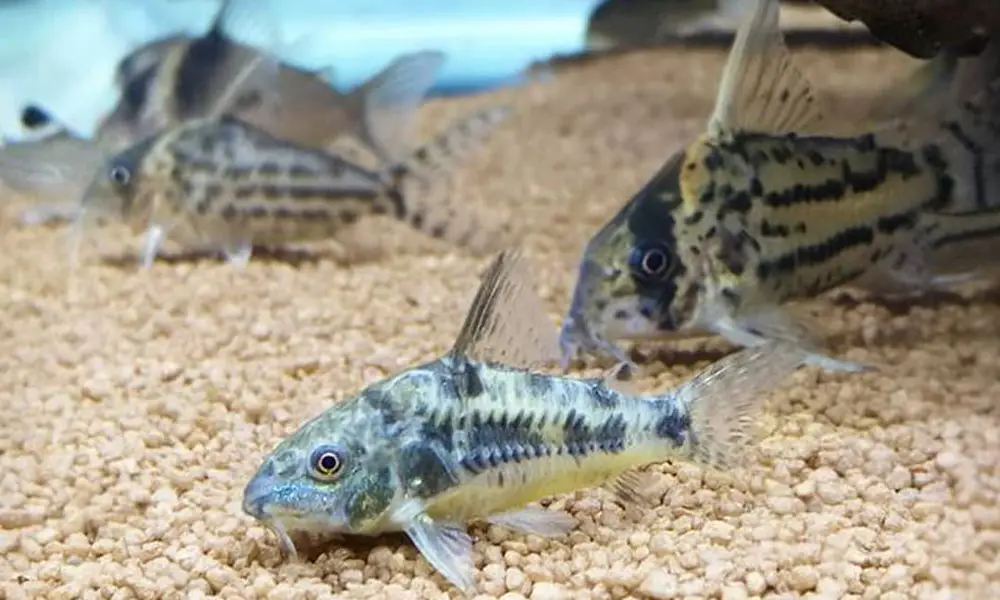
The Peppered Cory Catfish is perhaps the most commonly kept of cory catfish species and can be found in pet stores all over. Native to lower Paraná River basin and coastal rivers in South America, also known as the peppered catfish, mottled corydoras, and blue leopard corydoras.
Don’t be confused by the similarly-named Salt and Pepper Pygmy Cory Catfish(C. habrosus) mentioned above. The Peppered catfish is a much larger species. Males can reach about 2.5 inches (5.9cm), while females are bigger than males and will grow to 3 inches (7.5 cm).
Like other corys, the Peppered catfish is a very peaceful schooling fish that can get along with virtually all fish except for large or aggressive species.
| Scientific Name: | Corydoras paleatus |
| Origin: | South America |
| Temperature: | 72° – 79° F |
| PH: | 6.2 – 7.2 |
| Minimum Tank Size: | 10 Gallons |
Why is My Cory Catfish not Growing?
“What’s the matter with my Cory catfish?” you might ask. It is not uncommon to hear fish keepers complain of the poor growth of their cory catfish.
Corys are slow growers in general, but the growth speed can be disrupted through many factors. Here are five of the most important.
Species and Gender
Corydoras come in hundreds of species to choose from and are almost always commercially raised on fish farms, resulting in a group of species with similar shapes or patterns. It’s hard to locate and distinguish the species when they are young.
When people buy Corydoras, they are often mislabeled as one species and that name sticks with them throughout the supply chain. Most of the time, LFS workers have no idea what type of cory catfish you’re talking about unless there’s someone who can identify which fish it really is.
I ordered Julii catfish a few years ago and ended up with three different species in the bag.
Some species’ growth becomes stunted is due to their genetic makeup. You can do nothing to make them grow any more than their DNA will allow, such as the dwarf/pygmy cories.
On the other hand, if your little hobos have stopped growing and have not reached the standard, you may have male corys only. Females typically get bigger than males. There is a percentage of species that will look any different between the sexes.
As a beginner, focus on commonly kept Corydoras.
Tank Size
Though the myth that fish only grow to the size of the tank is incorrect, the point smaller tank will stunt the growth of your fish is true.
Waste and uneaten fish food will build up much faster in a small tank because of the very limited volume of water. Poor water conditions will harmfully stunt the growth of the fish present in the tank, includes your Corydoras.
Furthermore, stunted fish are more susceptible to disease and live shorter lives than full grown adults.
A good rule of thumb is considering the potential size at maturity and upsizing the tank before they need it.
Water Quality & Chemistry
Maintaining good water quality is essential to both your fish’s health and their growth. Most Corydoras species are native to the soft water river with a low pH in the wild, but the species found in LFS today are commercially raised, can be toughened and stand a much broader range of water chemistry.
Performing routine water changes is key to keeping these little guys happy and growing faster. Don’t forget to check your water parameters regularly; you don’t want any complications! You should do this every day, or at least two times a week if not more often.
Malnutrition
In their native habitat, Corydoras scavenge from your substrate, but it doesn’t mean that they can survive solely on uneaten fish food. Providing a balanced diet of basic food and treats could be the most crucial part of ensuring your cory catfish grows properly.
Personally, I have found Hikari Algae Wafers to be their favorite. On their treat day (Friday), they will be rewarded with live blackworms or frozen bloodworms.
The Wrap Up
Corydoras are peaceful schooling fish; they don’t need extra care in your tank. Most species can grow from 1 to 3 inches long.
There are several reasons why your corys may stop growing. Always take into consideration the tank size and water condition first. If they are still falling behind, check out what species they are, their gender, and their diet.
Good luck with your Corydoras!





